The Monchique pear – which is actually an apple variety – will once again be produced in its place of origin, the terraces of the mountain, preserving this genetic resource and enhancing the fact that it is a traditional product.
Bringing together projects and synergies of the Municipality of Monchique and the Regional Directorate of Agriculture and Fisheries of the Algarve (DRAP Algarve), this Wednesday, the 17th, at 10:00 am, a Cooperation Protocol will be signed (virtually) between those two entities , with the (also virtual) presence of Rui Martinho, Secretary of State for Agriculture and Rural Development.
This will be the initial step towards the installation, on the hilly terraces of Quinta do Convento (next to the ruined Convent of Nossa Senhora do Desterro), on land purchased in recent years by the municipality, of a Péro de Monchique and de a collection of fruit trees, replica of the one installed at the DRAP Algarve's Center for Agricultural Experimentation in Tavira.
Until the 90s of the last century, at the annual fairs that usually take place in the autumn, in the Algarve, especially in São Martinho, in Portimão, it was customary to sell Monchique pears. Its intense, characteristic smell is one of the memories that middle-aged Barlaventinos keep from these fairs.
In the gardens, often arranged on terraces down the slope, or in the most secluded ravines of the Monchique mountains, there are still examples of apple trees of this variety characteristic of the area. But many died, others were grafted with more modern and productive varieties, or burned in the various fires that have ravaged the mountain in these decades.
That is why the work of technicians from DRAP Algarve, especially engineer António Marreiros, was essential to ensure that this unique variety of fruit still exists and may have a future.
António Marreiros is responsible for collection of traditional varieties of fruit trees from the Algarve installed at the Tavira Agrarian Experimentation Center. There are carob, almond, fig, loquat, pomegranate and Monchique apple trees. It is a veritable “germ plasm bank”, a treasure of biodiversity.
“Since the 90s, we started to collect some material in Monchique. I remember, at that time, having been on the property of a small farmer, who was Mr. João da Vila, where we collected 14 materials», recalls António Marreiros, in an interview with Sul Informação.
Then, in 2011 and 2012, a project even went ahead to collect, throughout the Algarve, material from traditional fruit trees, plus citrus fruits (whose collection is installed in Patacão, DRAP's headquarters).
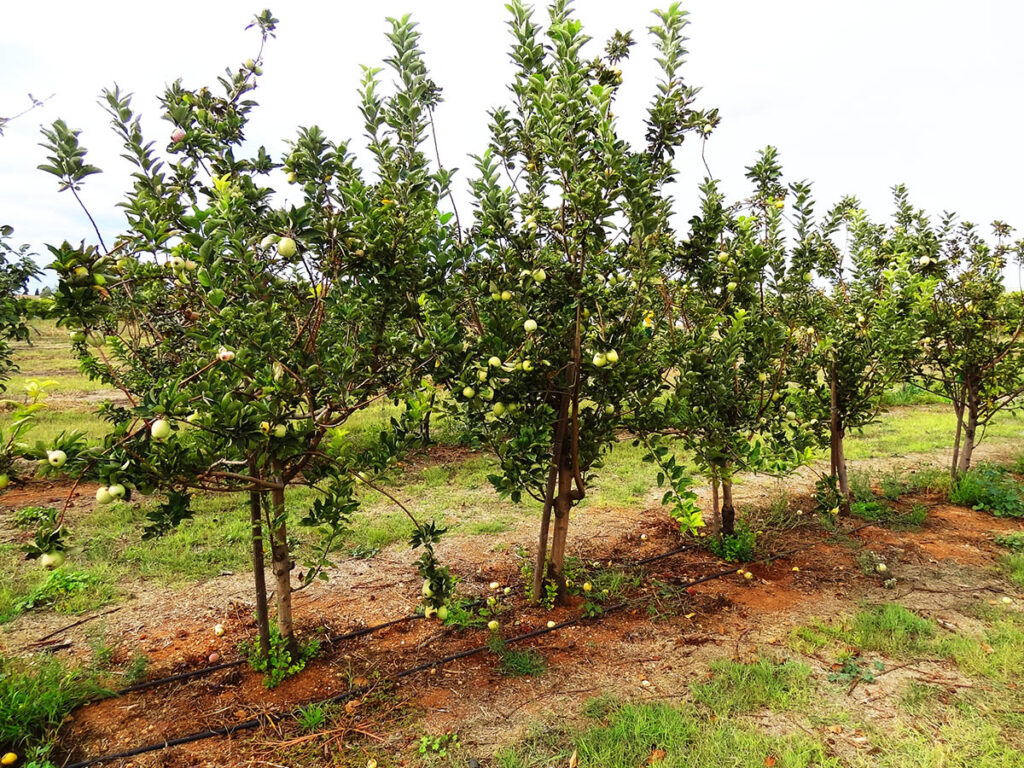
As for the pear, “our collection was based on information given by farmers or our colleagues from the Agriculture services. We walked here and there», walking along hills, valleys and ravines in search of trees.
«We collected a lot of material in the municipality of Monchique, but also in some areas of Aljezur and even in the northern part of the parish of Mexilhoeira Grande. From the point of view of soil and climate, they are very similar zones».
The harvest sites were, as far as possible, georeferenced, although there were «banks where we couldn't even get a signal to carry out the georeferences», recalls António Marreiros.
The materials collected from Monchique pear trees (32 materials, 14 of which from Senhor João da Vila's farm) were then planted in 2013 in Tavira, at the Experimentation Centre, with relative success.
«This tree needs cold to make the floral differentiation», so that it can bear fruit in conditions. It so happens that, in Tavira, in a land that is «only two kilometers from the sea», it is not cold enough for the trees of this variety to develop to their fullest extent.
Currently, at the Tavira Experimentation Center, the collection of traditional fruit trees includes five plants of each “variety” collected from Monchique pear.
However, to reach these trees, there was still a long way to go, which involved the cooperation of a specialist from the National Institute of Agrarian and Veterinary Research (INIAV), who «determined the most suitable rootstock». Then, «we hired a nurseryman, we took him the material for him to produce the plants and, the following year, we planted them in Tavira».
In between, there was also the collaboration of Rui Mateus, an intern doing his master's work at the time, under the guidance of UAlg professor Amílcar Duarte and António Marreiros, entitled “Characterization of traditional apple varieties (Pêro de Monchique )”. Rui Mateus is currently part of the project, on behalf of the Monchique Chamber.
At the Tavira Experimentation Center, there are now several trees that bear Monchique pears. There, admits the technician and researcher, “I can see what the flowers, the petals, the leaves look like. But it's in Monchique that these varieties do best, that's where people have to see them».
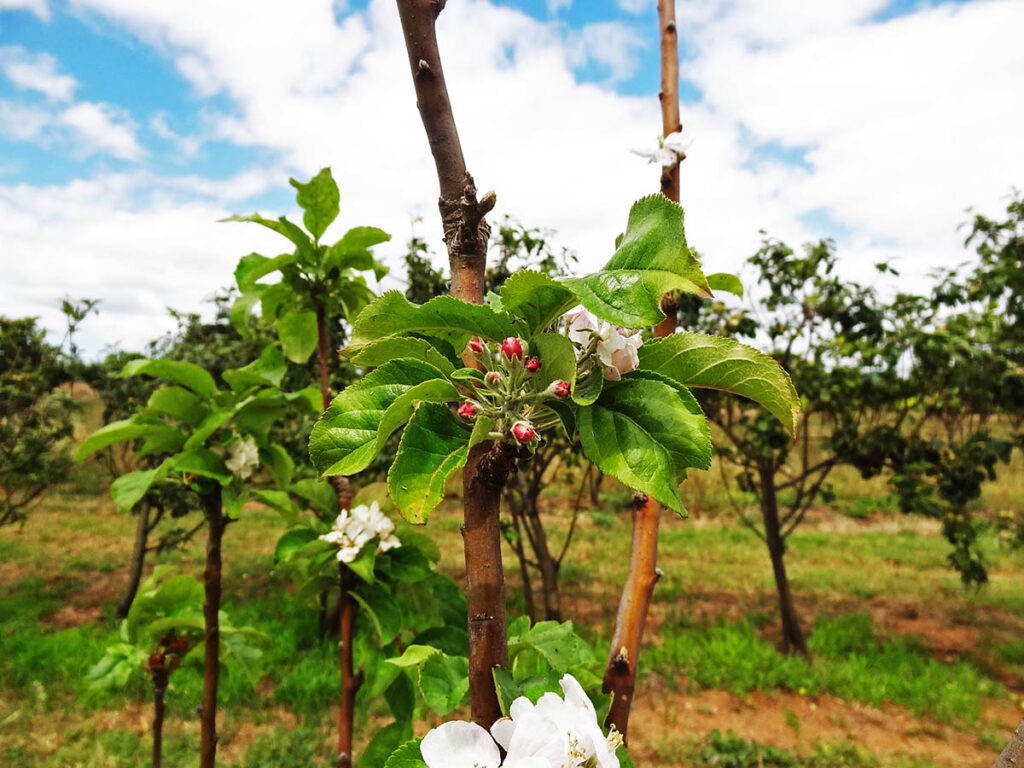
António Marreiros is, therefore, very happy with the fact that “the conditions have finally been met for the Monchique pear collection to return to its manor, to its area of origin, to whose conditions it is very well adapted”.
The DRAP technician points out that "returning them to their origins is precisely a desideratum of these collections", which, moreover, must always have "a duplicate". Why? “Imagine that there were only these trees in Monchique and that a fire would come and destroy everything…a very important genetic heritage was lost, with no chance of replacing it again”, he explains.
In fact, he recalls, some of the places where, since the late 90s, materials were collected, have already burned in the last great fires in the mountains. «Many of the trees where we collect the materials have already disappeared with the fires, unfortunately. There are a lot of them”, laments António Marreiros.
“A farmer has a tree like this today, but tomorrow it may no longer be there. We are getting to these materials always late, because a lost gene is lost forever. Science does many things, but it still can't create plants out of nothing», he stresses.
António Marreiros emphasizes that, in essence, creating the demonstration field and installing a pear collection on the terraces of Quinta do Convento, right next to the village of Monchique, is a way of giving back to Monchiquenses the sympathy with which DRAP technicians, in the his wanderings through the mountains were always received.
«We were always very well received, by all the people we went to. I think it was because they saw someone from the outside arriving there, some technicians, who valued those trees, some already quite old, but which, deep down, had helped support some of them, their parents and grandparents. These farmers were happy, even proud, because we were valuing something that had already come from their old people and that was in danger of getting lost, because their children and grandchildren are no longer in the mountains, nor are they working the land».
«Here some time ago, we promoted an event in Tavira, there at CEAT, and we invited all these people. 70% of them were there. And there were those who came to me and asked: oh engineer, where is what you brought from my farm? People were proud».
But what, after all, distinguishes the Monchique pear from other apples, of Portuguese or foreign varieties?
António Marreiros explains: «these are round fruits, slightly long, not very large, very aromatic», with a «green or yellowish hue, sometimes with reddish hues». One of the characteristics of the Monchique pear, which certainly explains its success in autumnal fairs in the Algarve of long ago, is the fact that it has «great storage capacity, at normal temperatures», without the need for artificial refrigeration. “These pears are harvested at the end of October, November and last a long time. I have some here, we are at Carnival and they are still good».
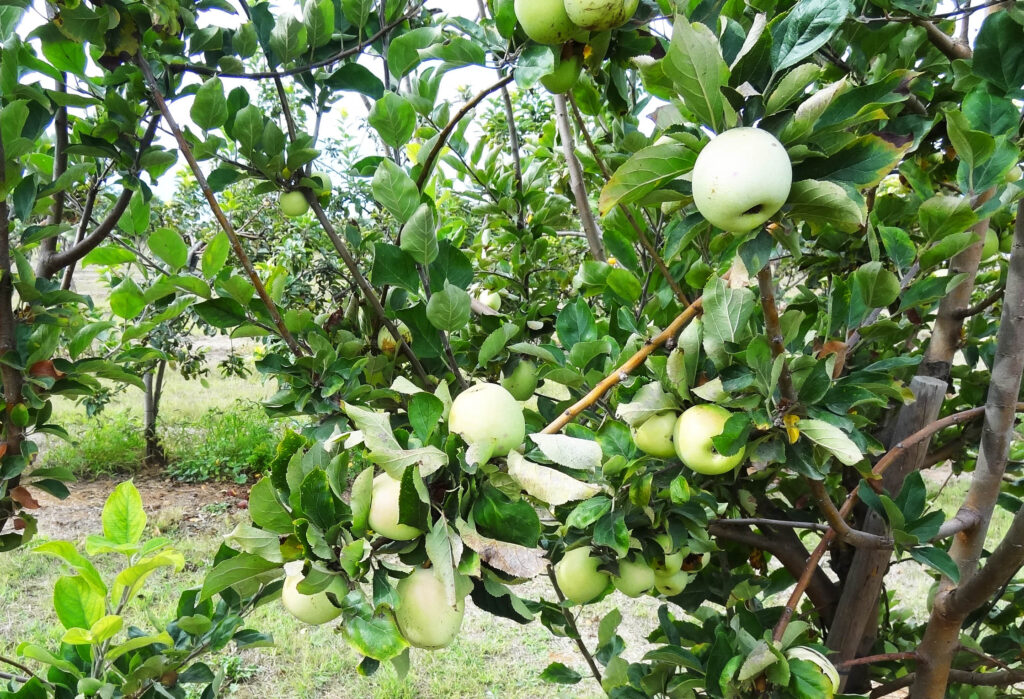
But, in Monchique, at Quinta do Convento, there will not only be pears. «Let's make a replica of the collection we have in Tavira», reveals António Marreiros.
In the Demonstration Field, then yes, “the five or six varieties that we think are Monchique pears” will be planted.
Installing the collection and the demonstration field on Monchique's terraces is, at bottom, a return to the origins. “We, technicians and researchers, will continue to monitor that. But the idea is for people to be able to visit there, to get to know the pear or to rekindle their memories».
In the future, which the technician hopes will be brief, "we hope to be able to challenge the nurserymen so that those materials enter the production and commercialization circuit of plants, in compliance with current legislation."
And, who knows, if there won't be farmers in the mountains who will be interested in planting orchards of this very special apple tree again. This idea, by the way, is defended by Rui André, president of the Monchique Chamber at the end of his term, who has always tried to promote the agricultural products of the US Mountain range. Pero is a traditional product, which may even become a new attraction for gastronomy and gastronomic tourism in the mountains.
António Marreiros, recalling his other passion, stresses that «these traditional varieties marry very well with organic farming, because they are better adapted to the soil and climate, although they are usually not as productive as other varieties».
Still in the future, there will be a whole work of "genetic analysis", which will have the support of the INIAV laboratory, in Lisbon. “It's a whole research work that is still ongoing”.
Today, the 17th of February, the first step will be taken towards this, which is a return to the origins of a product that awakens such good memories in many people in the Algarve. But until there is an orchard capable of receiving visitors, there is still some time to go.
In spring, the terrain will be prepared on the terraces, to plant the rootstocks. Only next year will they be grafted with the Monchique pear varieties. «Nature has its timings», warns António Marreiros.
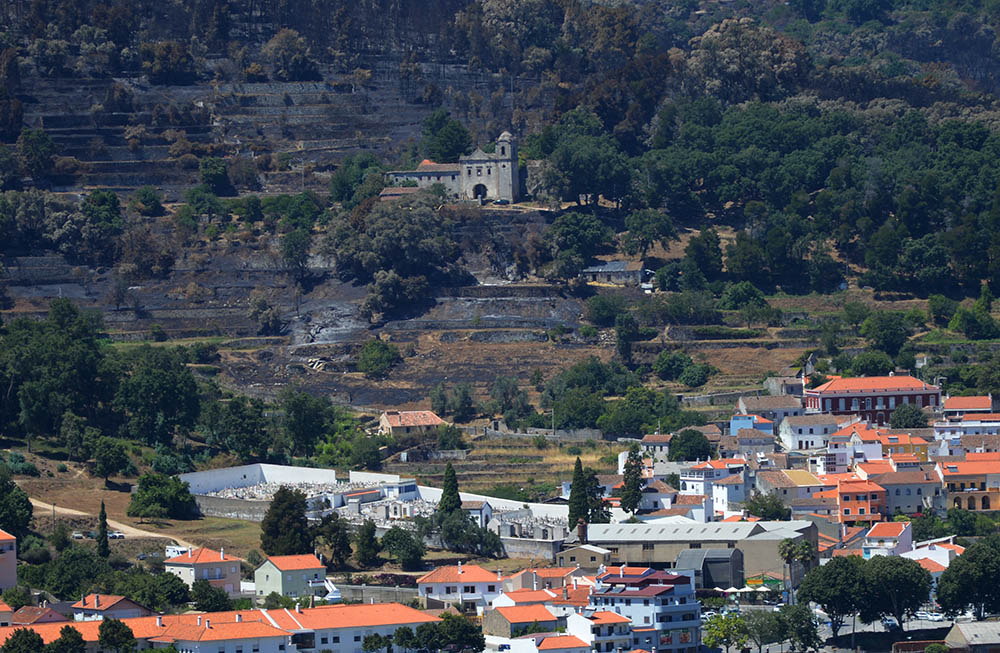
The project to rehabilitate the traditional irrigation terraces (or flowerbeds) systems at Quinta do Convento, promoted by the Municipality of Monchique, includes, as one of its components, the installation of the Monchique pear demonstration field and also the replica of the collection of traditional fruit trees.
But the project goes much further. "The terraces are part of the rural landscape of Monchique, but in many places they are disappearing, mainly because of abandonment, fires, land occupation with eucalyptus plantations", said Rui André, Mayor of Monchique, to Sul Informação.
"It's a whole landscape heritage that would disappear if we didn't do anything," he added.
And so, taking advantage of the opportunities opened by the Landscape Reorganization Program in the Monchique and Silves Mountains, a project emerged that preserves and restores the landscape, promotes «diversified and sustainable economic chains, promoting a new local economy», values the «services of the ecosystems", regulates the hydrological system, reducing erosion and runoff, and, on top of that, it creates a kind of buffer zone, a green ring of protection, between the forested areas of the mountains and the village, "increasing fire resilience of the space surrounding the town of Monchique».
The first part of the project, in which it is planned to invest around 150 thousand euros, and which was applied for the Environmental Fund, involves the recovery of an abandoned agricultural area, located in the area surrounding the Convent of Nossa Senhora do Desterro, a former convent of “Third Regular Order of São Francisco”, founded in 1631, whose importance for the county dates back to the development of agricultural activity, with the increase of agricultural and irrigation techniques, promoted by Franciscan monks.
Part of this farm is already owned by the Municipality, which intends to acquire the remaining parcels, in order to rehabilitate the entire area surrounding the Convent, giving it back the agricultural functions it once performed. This initiative reinforces the defensive effect of this ring, creating a fuel management mosaic that will increase the village's protection from rural fires.
In total, the Municipality's property has an area of 3,26 hectares, but, in this first phase, a parcel with 3200 square meters will be intervened, in other words, about a tenth of the total area. On the part of the municipality, the project is coordinated by forestry engineer Sónia Martinho.
One of the first measures will involve the reconstruction of the structures of the terraces and channels of traditional irrigation, whose projects have the support of the Department of Civil Engineering of the University of Algarve.
Rui André added that, «with the execution of this project, the Municipality intends to demonstrate to the rural owners of our municipality that it is possible to carry out a sustainable land management, using traditional agricultural techniques, increasing the productivity of agricultural land, generating income sustainable and environmentally responsible, and, at the same time, preserving the municipality's heritage, reducing the risk of fire and reducing the ecological footprint of agricultural production».
But the ambition of the Municipality of Monchique does not stop there: in the short term, revealed the mayor of the municipality to the Sul Informação, «we want to join the National and International Network of Bio-Regions, as well as start the process of recognition of the “terraces of Monchique” as World Agricultural Heritage by FAO».
And, as the intention is to attract young farmers to this project, the idea is that, in the near future, the terraces recovered from the mountain can be filled again with the flowers and aroma of the Monchique pear.
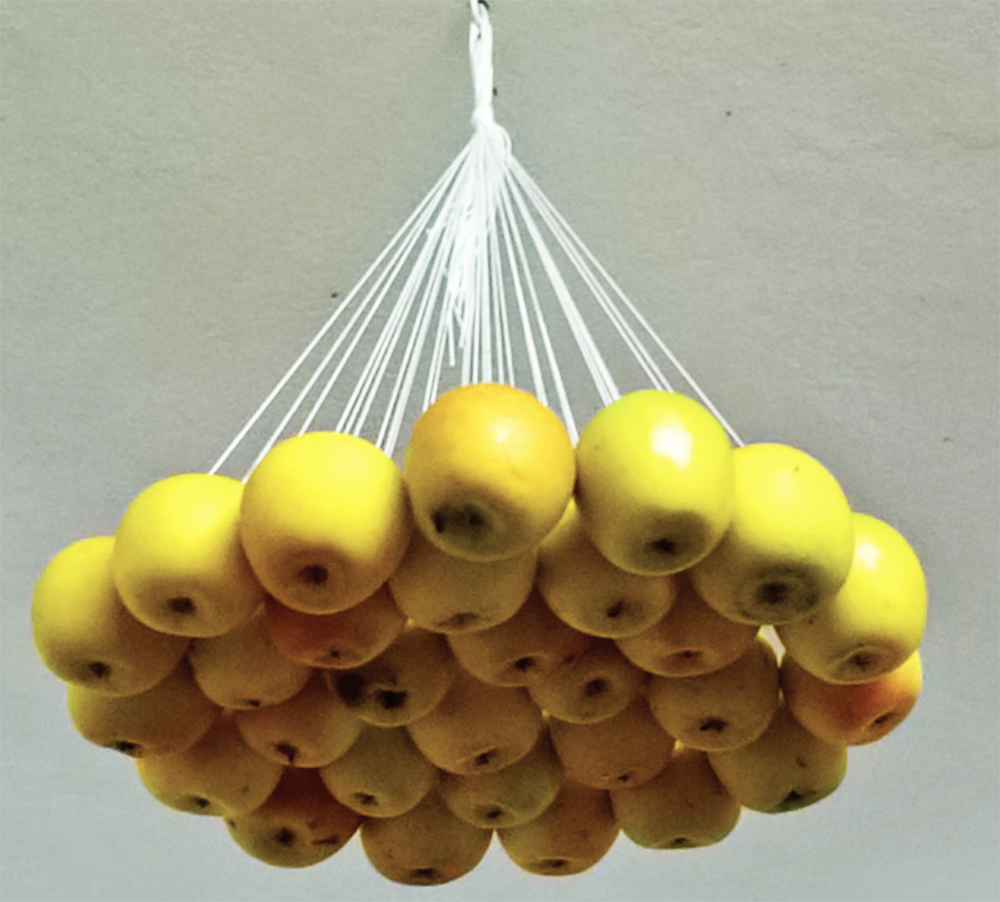
You can watch the protocol signing session and project presentation, live, from the page of DRAP Algarve's Facebook.
Help us to do the Sul Informação!
Contribute your donation so that we can continue to make your journal!
Click here to support us (Paypal)
Or use our IBAN PT50 0018 0003 38929600020 44
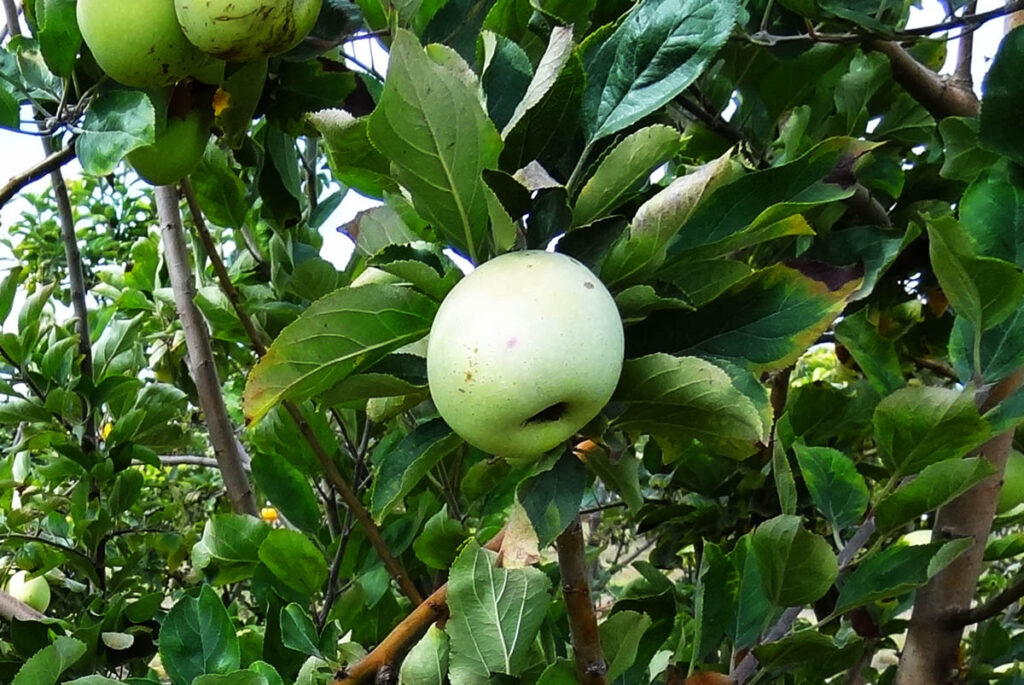

















Comments